In a previous post someone well spoted that I was playing with “Arabic” numbers, which are in fact Indian numbers (the circle means 5 and the dots are zeros.) It’s the Westeners who use Arabic numbers such as: 1,2,3.
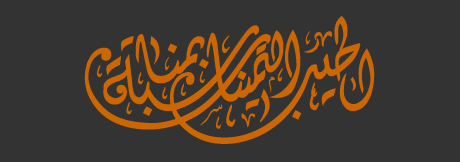
I’m fascinated by the look of the Arabic script. It’s out of this world. If Spielberg would have invented a writing for a new planet it may have been similar in looks to the Arabic script.
I think Arabic calligraphy is a form of art that has superseeded any other culture in its category. It’s highly complex and has many layers of meaning.
I won’t to go into details. You start doing that here if you wish. Allow me to just touch upon the subject and show you a few interesting examples.
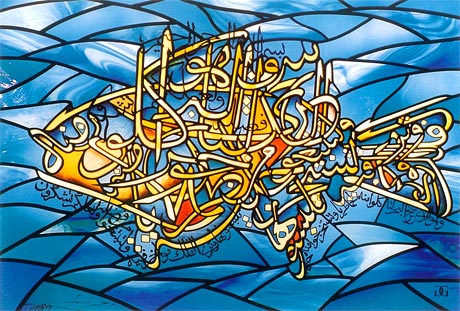
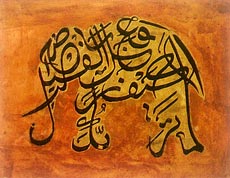 This style is my personal favorite because I’m an animal lover. It’s called zoomorphic calligraphy and some believe it’s developed because of the restriction of illustrating living beings according to muslim traditions.
This style is my personal favorite because I’m an animal lover. It’s called zoomorphic calligraphy and some believe it’s developed because of the restriction of illustrating living beings according to muslim traditions.
The example below is a highly popular style where carefully layed out miniature text makes up a bigger sentence. Both the small and big text are related and usually verses from the Koran.
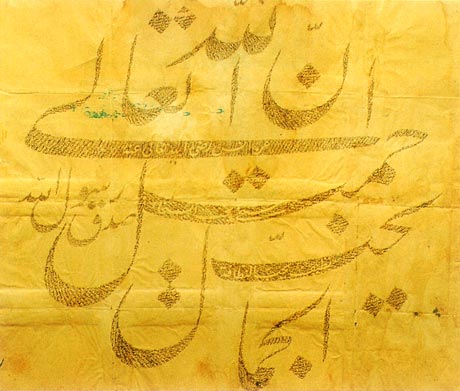
The one below showcases an ancient manuscript from Iraq. Note that in those times using black and red inks to write was a must. Later the red dots were replaced with other symbols that need not to be red.

Finally let me show you a modern script that can be found on contemporary buildings. This example below is a piece from a long text that goes all around the House of Koran. Note the geometric simplicity of the script.
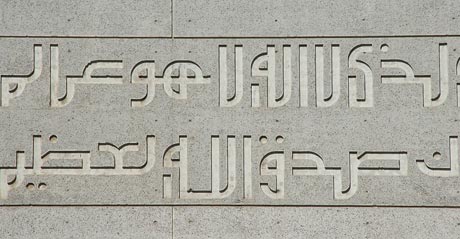
Latin font types seriously influence the contemporary Arabic typography. As you can see below sometimes latin fonts are mimiced to create similar looks.
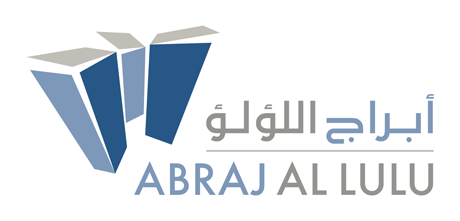
Arabic script and arabesque design is largely ignored outside the Middle East. Unlike many other languages that are used extensively as design elements even in the West, Arabic didn’t enter the mainstream culture. Japanese characters are all over girls as tattoos and t-shirts designs for example. Have you seen anybody with an Arab script tattoo?
I think the main reason Arabic calligraphy didn’t penetrate the pop culture is because it’s very closely associated with religion and the usage of these styles may be a sensitive issue.
Excuse my shallow views, but I think this is unfortunate, because Arabic calligraphy has a beautiful texture, which can be appreciated even if you don’t read the text. I fully understand however that for muslims the script means so much more than just pretty design. The Koran and the style of the text is holy and there is no room for reinterpreting these visual elements.
Read also: The Best AI Writing Tools You Need for Effortless Content Creation.
